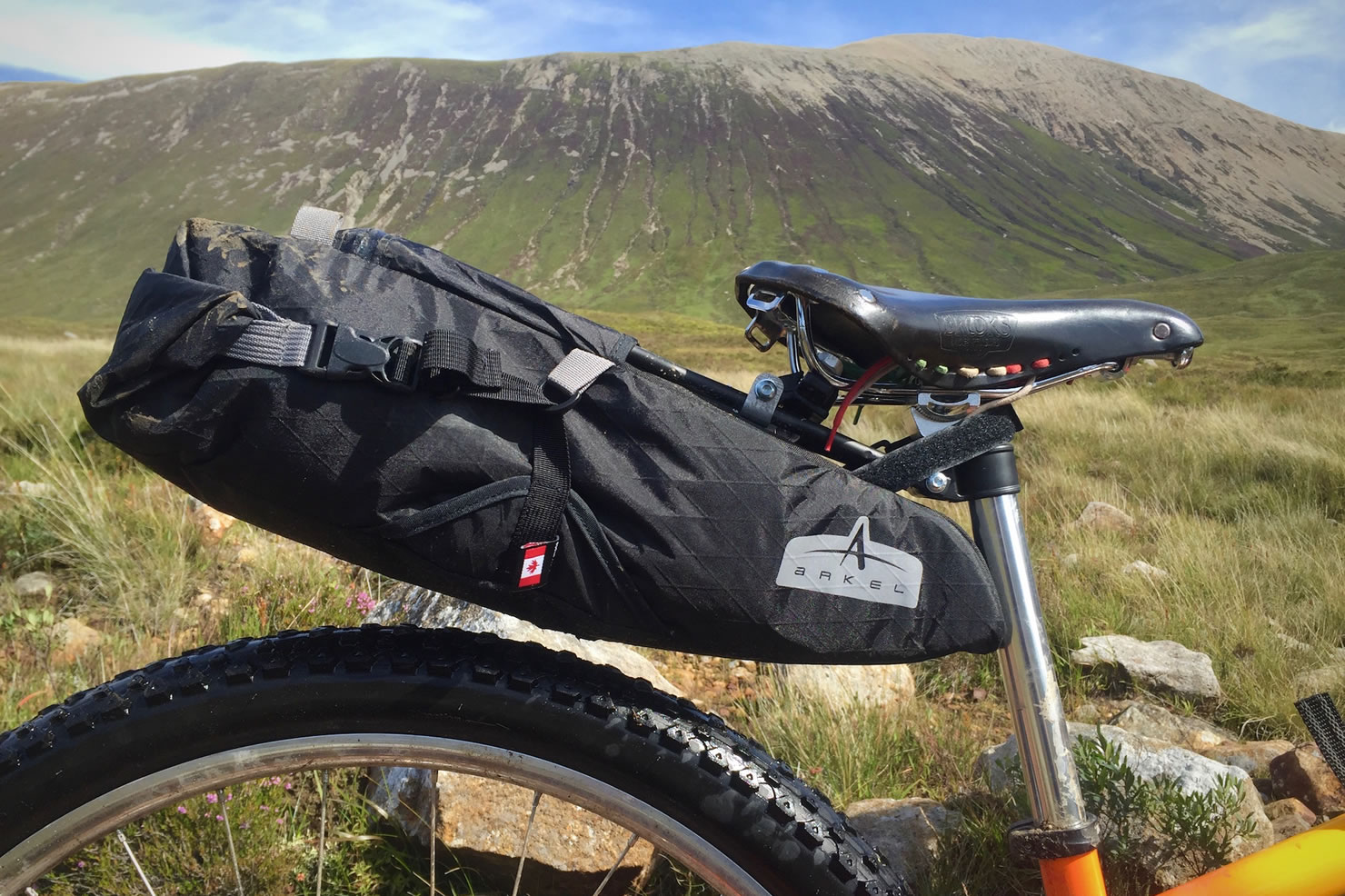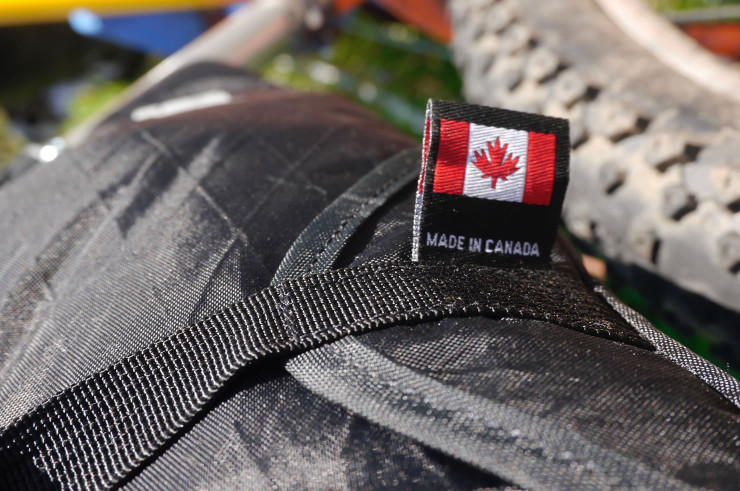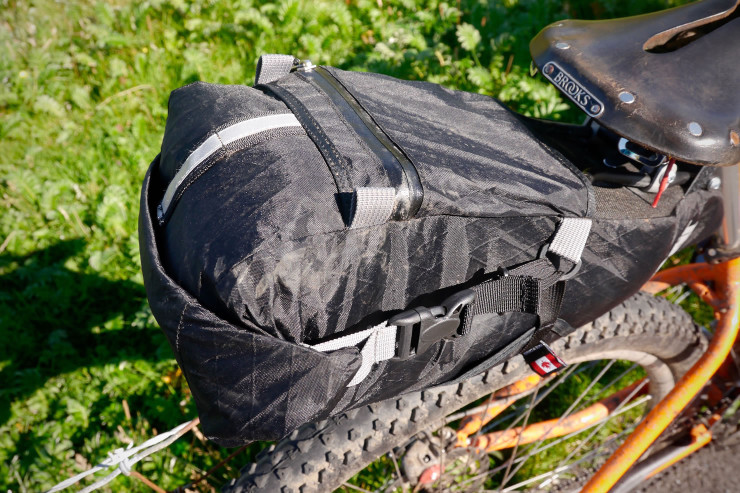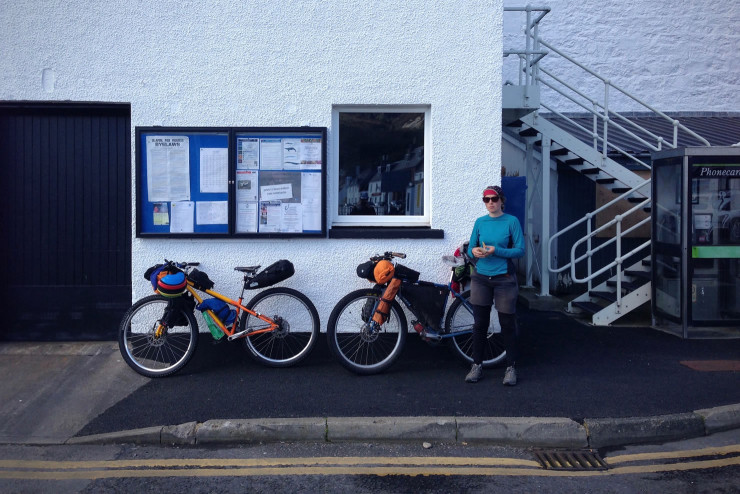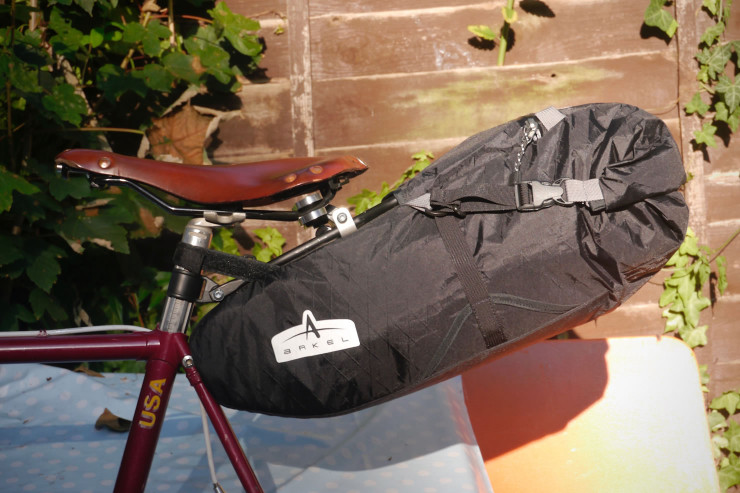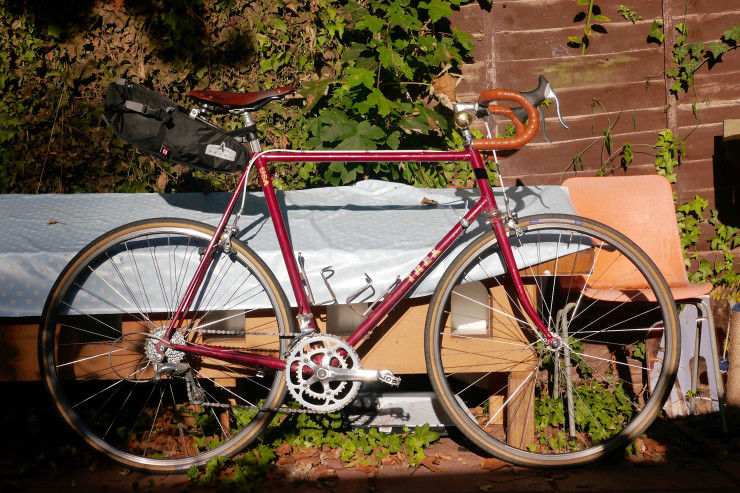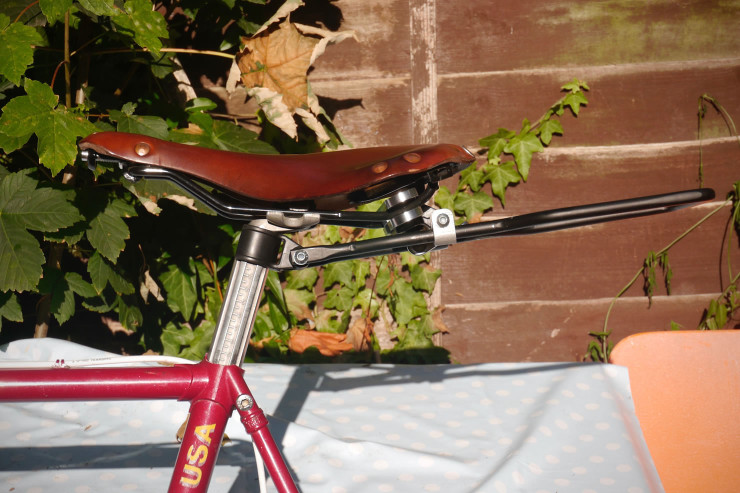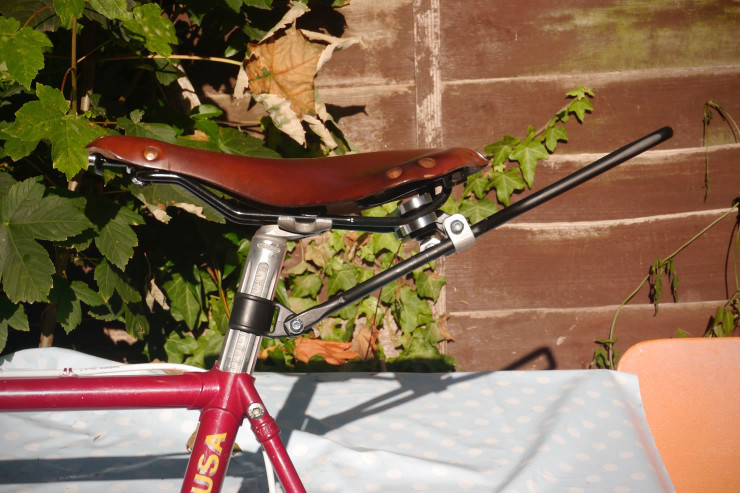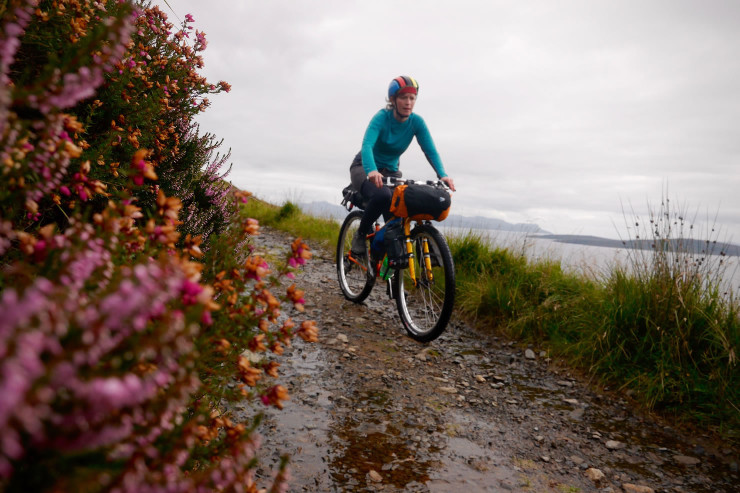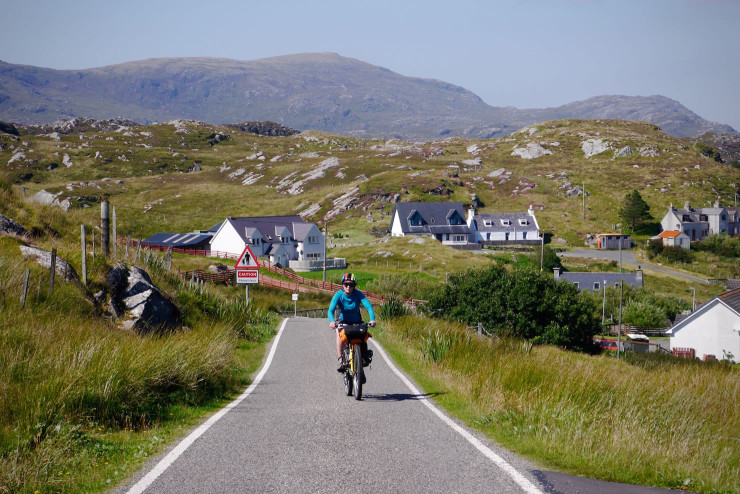Arkel Seatpacker Review: In The Scottish Highlands
Lee Vilinsky and Cherry Fitzsimmons took the new Arkel Seatpacker on the boggy singletrack and rocky trails of Scotland. See how it fared in this detailed review …
Words and photos by Lee Vilinsky
Arkel, a Canadian brand most bike tourists will know for their fantastic panniers, made their entrance into the bikepacking world with a debut of some interesting seat packs and handlebar packs at Interbike 2015. Fast forward a year, and their seat pack has finally come to market, albeit slightly refined in form and finish. A fully waterproof inner, easy on/off via a quick release rack attachment, two size offerings, and – a rarity for seat packs thus far – dropper post compatibility round out this feature-packed bag. Here are our thoughts after we gave the bag a decent thrashing during a two week trip in Scotland.
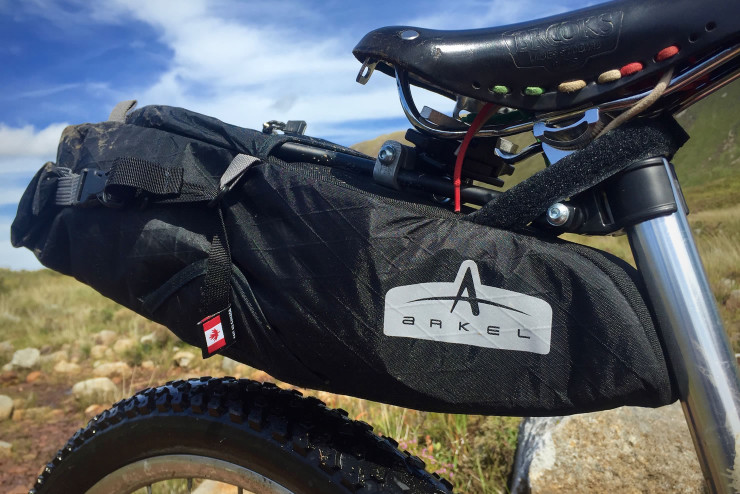
Seat packs are an essential part of bikepacking kit with frame bags and handlebar packs usually covering the rest. That said, I would argue that seat packs have the greatest variability between manufacturers, likely from the many considerations involved. Should there be a harness system that allows a bag and its contents to be removed easily, or is the bag designed to stay on the bike? If there is a harness, is it achieved through cleverly placed straps and stiffeners or is there a minimalist rack system involved? Or both? What about seat rail to tire clearance? Tail wag? Leg rub? The list can go on, but it’s clear that a well-designed seat pack is difficult to execute. That’s not to say handlebar packs don’t have their considerations as well. But, in a pinch, where you can take some adjustable nylon straps and cinch a standard dry bag to your handlebars, seat packs will take a little more ingenuity to improvise.
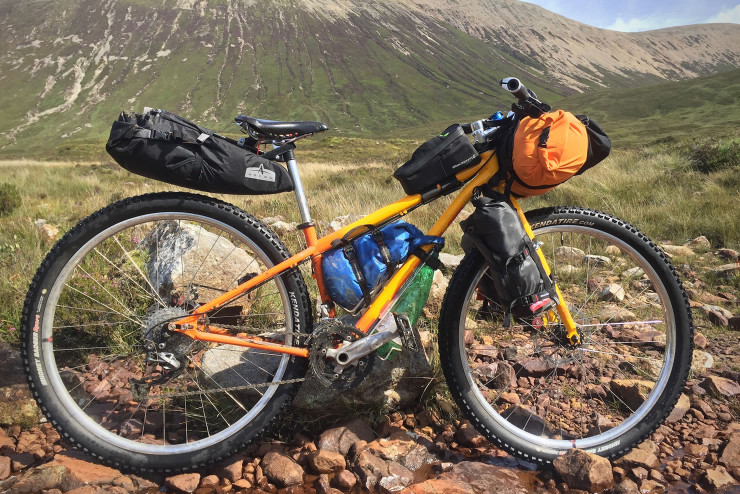
Set Up
Arkel has been making panniers, handlebar bags, and an assortment of other bicycle luggage since 1988, so they obviously know the needs of cycle tourists. Upon first inspection of their new Seatpackers — Seatpacker 9 and Seatpacker 15 — it was clear that the same level of detail and construction has carried over into their bikepacking line. The bag is fully waterproof by way of a two-layer design: the outer is made of a mixture of X-pac and Cordura fabrics while the inner grey liner has a waterproof membrane that is taped and sealed along the seams. This keeps the bag waterproof without feeling overly stiff when trying to roll up the fabric during packing. The seatpost end of the bag has a nice taper and has plenty of rigidity to maintain its shape while even partially loaded and to prevent bulging while fully loaded, thanks to some internal HDPE stiffeners. The rack has aluminum rails and an aluminum quick release bracket that is designed to clamp on the saddle rails. When properly set up, the bag is installed by sliding the rack under the sleeve and securing the velcro strap around the seatpost bracket. Installing and removing the bag from the rack is only a matter of seconds, and removing the rack from the bike entirely requires only a few more seconds. This is a big plus if you plan to use this bag for various bikes in the stable.
Arkel had sent us both the 9L and the 15L versions to try as we were unsure of clearance using 29” wheels on a size Small hardtail. We ended up using the 9L since the 15L model would not clear the tire – the 9L was just able to squeak by. This proved to be a better fit for our gear anyway, but is something to keep in mind if you’re using big wheels on small frames. Also note that both models use the same rack, so you could potentially own both bags with only one rack and use whichever bag would be necessary for the amount of gear that you plan to take.
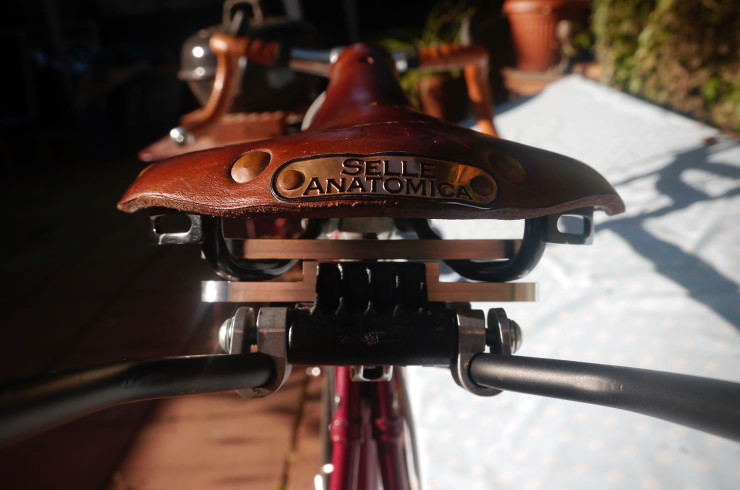
Before installing the Seatpacker, we had to build up two bikes from their boxes and pack all of our gear in a rush in order to catch a series of trains from London to the Highlands of Scotland. Thankfully, the installation was very straight-forward and only took a few minutes. Arkel do provide a video on their website, but most users will likely be able to figure it out without. Two aluminum back plates are included for use with the rack, the wider of the two designed for use with a saddle that typically has a wider rail span, such as a women’s specific model. We used the wider plate to clamp onto the rails of a Brooks B17S Imperial. We had to clamp onto the horizontal parts of the rails as the wide plate still would not clamp the upper part of the rails. We ended up clamping the quick release extra tight and only experienced slipping at the very end of our two-week trip. This was partially our fault, however, as we would learn later that a Brooks saddle adaptor was required for our purposes (available separately through Arkel), in order to mate better with the usually wide span between rails only found on Brooks and Selle Anatomica saddles. Despite the technical incompatibility, the bag felt rock solid when installed, though we would definitely recommend the Brooks adaptor for long-term use.
Now to catch those trains up to the Highlands…

During the Ride
We rode everything from boggy singletrack, rocky hiking trails, and pristine pavement to give the bag a proper test. To this end, the first thing we noticed about the bag was its stability. It’s almost shocking how stable the bag was, especially during some technical descents. Even though there seemed to be less than an inch clearance from the tire, the bag never actually rubbed. This is one of the main benefits of the minimalist rack system – whereas we’ve had the straps loosen over rocky terrain on other soft mount systems, the rack was always secure and we never thought twice about checking the bag and cinching anything back up. In fact, we would feel confident loading the bag up with some heavier objects (e.g. food, tools, stove) compared to other seat packs we have tried. Arkel do not give a weight rating for their rack, but we would advise loading the bag lightly anyway for the sake of handling.
Aside from the rugged terrain, Scotland is famous for its less-than-sunny weather, which would also prove if the bag was fully waterproof or not. Truth be told, we somehow managed to avoid getting caught in any significant rain during our entire trip – possibly a first for any bikepacker in Scotland (the midges were another story, however). We did ride through some light showers and left the bag outside overnight during some heavy rain, just to see what it would do. We never experienced any seepage during any of our riding, whether it was from spray from the tires while rolling through wetlands or during light precipitation. We did find our gear fairly damp inside after leaving the bag out in heavy rain, though this was likely because the end of the bag was only rolled up once as a result of being slightly overstuffed. Also note that the main compartment buckles can either buckle to each other to form a carry handle or they will buckle to the sides of the bag in order to compress the contents and stabilize the load. For the best results, we’d recommend compressing your gear and rolling the end of the bag downward at least twice, then buckling into the side straps. The bag does certainly seem waterproof, but we do not reckon it’s air-tight. This means that although it should resist water enough for most purposes, a total submersion of the bag would go beyond its capabilities.

On the durability side, we found some noticeable wear on the top cordura section of the bag that interfaces with the rack. The material did not wear all the way through, but even if it did, there is a plastic sheet sewn into the fabric underneath the cordura which would protect it. In the future, we’d like to see a more durable interface between the rack and the bag, possibly with some plastic sewn to the outside as well (similarly to how the lower portions of Ortlieb panniers have reinforced plastic on the outside). The bag itself and all of its trimmings (buckles, zipper, straps) feel solid and should stand up to lots of abuse.
As for the Droppers…
One aspect of the bag that we found intriguing was its ability to be run with dropper posts. Becoming more and more popular for regular mountain bike outings, dropper posts have basically been left to the wayside for bikepacking setups, mainly because of their incompatibility with most seat packs. Some workarounds are available, but nearly all other seat packs use one (or two) thick velcro straps around the seatpost which would be crushed if used on a dropper post when compressed. The only attachment point to the post on Arkel’s system is via a rubberized bracket which sits snugly under the saddle clamp. Because the bracket does not actually clamp the post, you can use a carbon seatpost without issue as well. Note that the height of the bracket may limit the stanchion from fully compressing (depending on the model of dropper), but not nearly as much as many other offerings that wrap around the post itself. In any case, using a seat pack with a dropper post presents its own problems with regard to tire clearance. For example, a dropper post on our setup would have definitely caused the bag to hit the tire when compressed. Though we didn’t get to try installing the bag on different frame sizes, you’d likely have to be a tall rider or use a bike with a smaller wheel size (or both) to fully use your dropper and the bag. Bikes with rear suspension would add another dimension to this issue, though it is pretty neat that there is finally a no-hack-necessary solution to running a seat pack with a dropper, which many riders will appreciate.
Pros
- Rock solid stability eliminates tail wag and lateral movement
- Easy on/off allows adapting to all sorts of bikes on the fly
- Dropper post compatibility, a first for this type of bag
- Waterproof without feeling stiff via its two-layer liner design
- Multiple size options
Cons
- More expensive than other bags in this category
- Heavy, even compared to other bags with a rack system
- Less durable interface between rack and bag, miniscule velcro strap
- Model(s) tested Seatpacker 9/Seatpacker 15
- Volume 9L/15L
- Weight 640g/720g
- Price $199.95/$219.95
- Place of Manufacture Canada
- Contact arkel-od.com
Wrap Up
Overall, Arkel’s Seatpacker is a solid seat pack that will work great for most bikepacking setups. The Seatpacker aesthetic is plain but purposeful. Its strengths over other bags of this type are that it can be used with a dropper post and that it uses a rack system that eliminates vertical and lateral movement. Other bags that use a rack system (such as Porcelain Rocket’s Mr. Fusion and the new Burra Burra seat packs from Specialized) clamp the post itself, making them a bit more cumbersome to move around different bikes and also make them incompatible with carbon and dropper posts. The rack does help immensely for stabilizing the load and most users should feel confident with the bag fully loaded, even with some heavier items. As their first entry into the bikepacking market, Arkel have done a great job with their seat pack and has us excited to see what they have in store for other bikepacking solutions.
Disclosure: Arkel provided the bags for this review at the time of their launch.
Follow Lee and Cherry’s travels by bike via Instagram @touringlee and @theseplacesinbetween.
Please keep the conversation civil, constructive, and inclusive, or your comment will be removed.






